357 Magnum vs 9mm – The Ultimate Showdown
Let’s dive headfirst into a caliber comparison that’s hotter than a two-dollar pistol in a back-alley poker game. We’re talking about two of the most popular handgun cartridges ever conceived: the venerable 9mm and the bone-rattling .357 Magnum.
These aren’t just any calibers; they demonstrate the versatility of handguns. This debate extends beyond the cartridges themselves, cutting directly to the core of the revolver versus semi-automatic argument. They’re different, yet eerily similar in their sheer effectiveness, you know what that means: it’s gonna be a hell of a good time.
357 Magnum vs 9mm Specs
| Specifications | 9 x 19mm | 357 Magnum |
|---|---|---|
| Bullet Weight | 115gr to 147gr | 125gr to 180gr |
| Bullet Diameter | .355 inches | .357 inches |
| Case Length | 19.15mm | 33mm |
| Max Overall Length | 29.69mm | 40mm |
| Case Capacity | 13.3gr H20 | 26.2gr H20 |
| Max Pressure | 34,084 PSI | 35,000 PSI |
Why Compare the 357 Magnum vs 9mm?
Today, we’re putting two heavy-hitting handgun cartridges head-to-head: the 9mm and the .357 Magnum.
These aren’t just any calibers; they demonstrate the versatility of handguns. This debate extends beyond the cartridges themselves, cutting directly to the core of the revolver versus semi-automatic argument. They’re different, yet surprisingly similar in what they deliver.
Now, both of these cartridges are extremely popular, wildly capable, and proven. In a lot of ways, they’re the top-tier combat cartridges in their respective arenas, each a king in its own genre. What makes this whole comparison a blast is that these two calibers are very much alike, but also completely different. It’s a weird, walking contradiction if you think about it.
Let’s talk specifications. The projectile sizes are practically twins. The 9mm slings a .355 caliber bullet, and, no surprises here, the .357 Magnum uses a .357 caliber projectile. That .002 difference? Could be a rounding error for all it matters. Both rounds were born for the fight: the 9mm for military forces, and the .357 Magnum for police officers.
The 9mm is a few decades older than the .357 Magnum, but only in the last few decades has the cartridge become the go-to option for military forces, police officers, and concealed carriers.
They’ve both served faithfully, from law enforcement duty to the ever-present concealed carry holster, and far beyond. While they share a lot of DNA, they are also entirely distinct animals. The .357 Magnum is generally a revolver cartridge designed to inject a whole new level of thump into the fighting handgun. The 9mm, on the other hand, is the quintessential automatic cartridge, striking a sweet spot between potent power and generous capacity.
Given the sheer popularity both of these rounds have enjoyed among law enforcement, the concealed carry crowd, and individuals defending their homes, it only makes sense that we give them a deep dive. Examining various guns for defense, hunting, and competition is essential, but considering the calibers is just as important.
9mm Review
Let us start with the 9mm cartridge and dive into its history, purpose before pitting the two cartridges against each other.
History and Purpose
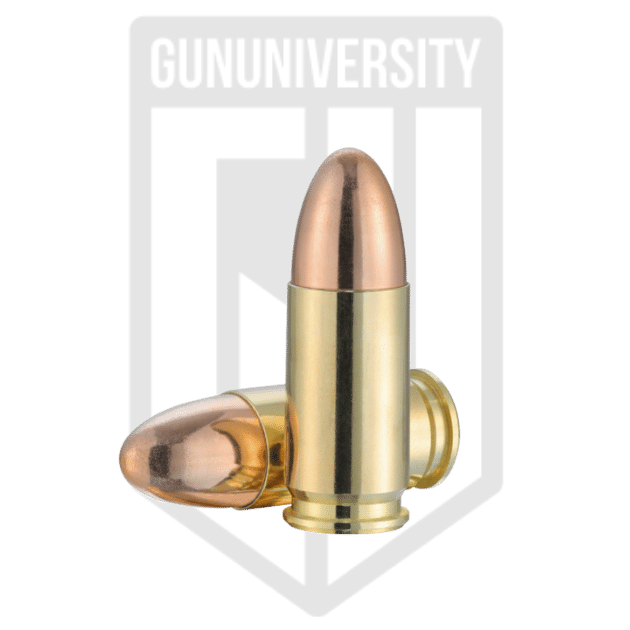
Let’s talk about a true veteran in the firearms world: the 9mm. This isn’t some recent innovation; this cartridge has been a cornerstone of handgun and submachine gun design since 1901. That’s over a century of proven performance.
Its origins trace back to Georg Luger, who in 1901 sought to improve upon the 7.65x21mm Parabellum. He developed a round featuring a 9mm projectile within a 19mm case. This shorter profile allowed for more ergonomic pistol grips and improved feeding reliability in early automatic designs. Crucially, the round delivered sufficient power for its intended purpose.
A Proven Combat Cartridge
The 9mm quickly transcended its initial design purpose to become a formidable combat cartridge. It saw extensive service in World War I, World War II, and nearly every conflict thereafter. Its versatility led to widespread adoption in both pistols and submachine guns. European militaries were particularly quick to embrace it, and by World War II, both Allied and Axis forces utilized the 9mm. Iconic examples include the British Sten gun and the German MP40, both chambered in 9mm.
U.S. Adoption and Global Dominance
While the United States initially favored the .45 ACP, the 9mm’s global prominence eventually led to its widespread adoption by the U.S. military and law enforcement, beginning in the 1980s. Since then, it has become the standard sidearm cartridge for NATO, the U.S. military, and most modern police forces worldwide.
Continuous Evolution and Performance
The 9mm’s long history has allowed for continuous research and development, particularly in projectile design. Advancements like jacketed hollow point (JHP) rounds have significantly enhanced its terminal performance. These modern bullet designs have effectively narrowed the performance gap between the 9mm and larger calibers such as the .40 S&W and .45 ACP.
Ultimately, the 9mm stands as a testament to effective firearm design and adaptation. It’s not just a cartridge; it’s a century-plus legacy that continues to define modern handgun and submachine gun use globally.
This included effective projectile design involving jacketed hollow point rounds. These JHPs helped narrow the gap between the 9mm and larger rounds like the 40 S&W and 45 ACP.
9mm Ammo Recommendations
Where do you start with a cartridge that’s been around for over a century. Here’s our recommendations of 9mm ammo for different scenarios.
Working Ammunition
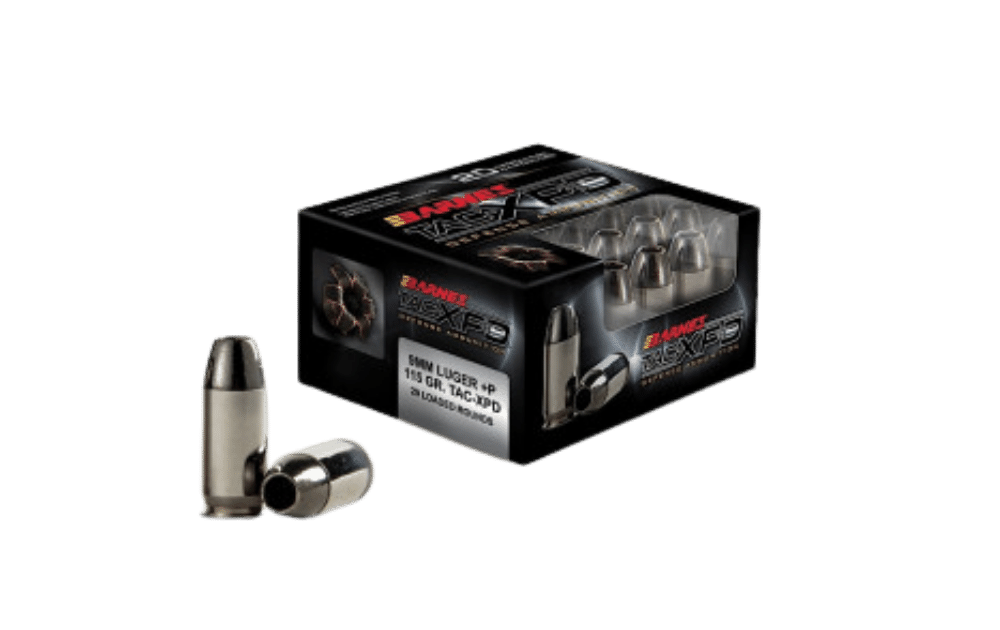
Marketplace |
Cost Per Round |
| Palmetto State Armory | $0.92 |
| Natchez | $1.15 |
| Cabela’s | $1.39 |
357 Magnum Review
Continuing on, let us look at the 357 Magnum’s history and purpose and some ammo recommendations before we really jump into the comparison of these two rounds.
History and Purpose
Even as World War 1 pushed automatic pistols into the mainstream, American police forces largely remained committed to the reliable six-shooter. Revolvers, predominantly chambered in .38 Special, were the standard. However, the rise of organized crime during the Prohibition era and the motorized gangster of the 1930s presented new challenges for law enforcement, demanding a more potent cartridge.
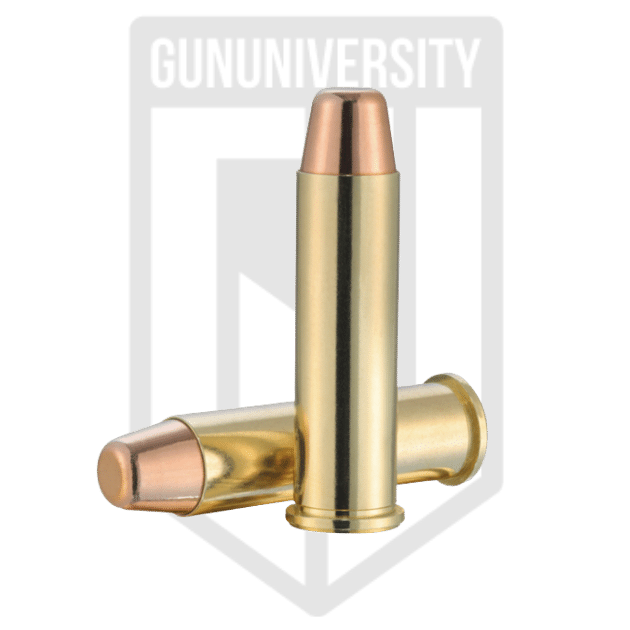
The .38 Super Automatic was one of the few handgun rounds capable of reliably penetrating car doors of the era. This capability became a critical need for police, who sought a revolver round with similar performance against the vehicles used by bootleggers and bank robbers.
In response, a collaborative effort among firearms experts began. They conducted experiments with enhanced .38 Special loads in more robust .44 caliber revolver frames. This research aimed to develop higher velocity rounds capable of piercing the relatively thin sheet metal of automobile doors. Notably, Elmer Keith was instrumental in developing these “souped-up” .38 Special concepts. Smith & Wesson eventually brought the .357 Magnum to fruition, producing the first revolver specifically designed for this powerful new cartridge.
The firearms industry quickly recognized its potential, leading to the production of various .357 Magnum revolvers. Colt, for instance, readily adopted the round for its popular “Snake” series. A deliberate design choice made the .357 Magnum cartridge slightly longer than the .38 Special. This dimensional difference prevented accidental loading of .357 Magnum rounds into firearms designed for .38 Special.
The .357 Magnum cartridge rapidly gained favor within law enforcement. State, federal, and local police forces quickly adopted the heavy-hitting cartridge, which earned a reputation as a highly effective “man stopper.” While revolvers and the .357 Magnum have largely been superseded by semi-automatic pistols in duty use, the cartridge remains a popular choice among civilian shooters for its power and versatility.
357 Magnum Ammo Recommendations
Below are our recommendations for 357 Magnum ammo for the range and home defense.
The Many 9mm and Few 357’s
Before we go any deeper, we need to address that quite a few 9mm rounds exist, especially because of the pistol varieties. 9×19 is the round that dominates the 9mm field and is also known as 9mm NATO, 9mm Luger, 9mm Parabellum, 9×19, and just 9mm. Other 9mm rounds include the 9×21, 9mm Short (aka 380 ACP), 9mm Browning, (also 380 ACP) 9x23mmR, 9mm Makarov, and 9mm Glisenti.
Needless to say, there are lots of 9mm ammunition, and the 9×19 goes by many, many names. It can be confusing but worth noting. The good news is that most places only carry the 9mm we all know and love.
357 Magnum is the only 357 Magnum but isn’t the only 357. The 357 SIG is the other 357, and it’s a bit of a mix between 357 Magnum and 9mm. It’s a 9mm projectile loaded into a 40 S&W case. It flies fast and hits hard, but it’s not a 357 Magnum.
The .357 Remington Maximum is a suped-up 357 Magnum that’s an absolute powerhouse of around. It’s insanely powerful and too long to fit into a 357 Magnum cylinder. A similar round to the Remington Maximum is the 357 SuperMag which is slightly longer than the Remington variation but roughly the same kind of power level. Oh, and apparently, in Europe, 357 Magnum is known as 9x33mmR, or so they say.
Ballistics
Both rounds offer you outstanding performance for what they are. However, they are very, very different. The 9mm is a bit of an intermediate pistol round designed primarily for automatic pistols. A 9mm round weighing 124 grains reaches 1,150 feet per second and strikes with 364 foot-pounds of energy. Admittedly that’s average in terms of ballistics, and it’s no 10mm and certainly no 357 Magnum.
The 9mm will routinely reach the FBI standards for penetration through 12 inches of ballistic gel. This means in a defensive scenario, the 9mm has no issues reaching the vitals of a bad guy and effectively stopping the threat. Historically many have looked at the round as anemic, they’ve often failed to understand that pistol rounds suck in general and the difference between most automatic cartridges is nil.
The 357 Magnum is an entirely different beast. I mean, there is a reason the name Magnum stuck with this round. All that case capacity opens up the potential and possibilities. The 357 Magnum round loaded with a 125-grain projectile reaches almost 1,500 feet per second and strikes targets with 585 foot-pounds of energy. Needless to say, ballistically, it outperforms the 9mm.
The 357 Magnum also has no problems reaching the FBI standards and even exceeding them. While the minimum is 12 inches, the maximum is 18 inches. Past 18 inches, and you risk overpenetration, and the potential to strike an innocent person or destroy property increases. Proper self-defense bullet selection is a must when shooting the 357 Magnum.
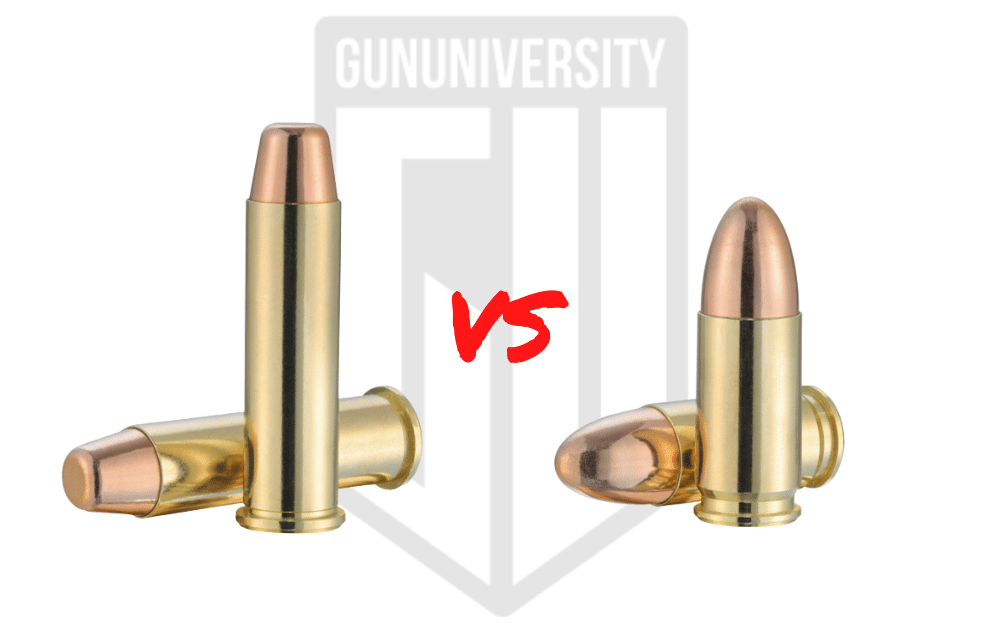
Both rounds are meant for handguns but have found their way into long guns. 9mm is the caliber of choice for semi-automatic carbines, and the 357 Magnum sits pretty in lever guns. Both rounds have their effective range extended from a long gun and do well in these platforms.
The 357 Magnum predictably does much better. When loaded with a Hornady Flex tip or Leverlution round, the 357 Magnum has hardly any drop out to 100 yards from a 16-inch barrel. With regular 357 Magnum ammo, you see a few inches of drop at best. With 9mm, we are looking at 10 to 12 inches of drop out to 100 yards and the potential for lots of wind drift.
Without a doubt, the 357 Magnum kicks 9mm butt when it comes to effective range, energy on target, and wind drift. While both rounds work well for self-defense, the 357 Magnum kicks ass in the realm of hunting.
Recoil and Muzzle Rise
357 Magnum kicks butt ballistically, but as you’d imagine, you pay for it via recoil and muzzle rise. The 357 Magnum is not some kind of crazy powerful cannon that kicks your butt up and down the range. That being said, the gun certainly has some recoil and muzzle rise compared to the 9mm.
In a duty-sized revolver with a big heavy frame and 4-inch barrel, the 357 Magnum is a tight little shooter that’s slightly stout. Not a big problem, but follow-up shots will always be faster with a full-sized 9mm automatic. It’s just the nature of the beast.
We see a massive difference when we shrink the guns. If you choose a 357 Magnum in a snub nose design, the gun becomes much less manageable. An air-weight snub nose is a literal handful to hold onto when you start spitting lead. A smaller 9mm might be snappy, but it’s heavenly compared to a 357 Magnum snub nose.
There is something to be said for a 357 Magnum’s ability to chamber a 38 Special round. These heavier frame guns can very safely fire the tamer and mild recoiling 38 Special and 38 Special +P loads. These make the gun much tamer and easier to shoot.
It’s the nature of the beast, and there is no such thing as a free lunch. If you want that 357 Magnum power, you’ll pay for it. If you want high capacity and low recoil, you have to sacrifice power to get it.
Weapon Choice
Both the 9mm and .357 Magnum boast extensive firearm catalogs, offering a wide array of pistols, revolvers, and rifles. However, the 9mm undeniably provides a greater selection, largely due to its earlier and more sustained popularity. This translates to a significantly larger number of handgun options and a recent explosion in pistol caliber carbine (PCC) models.
One key advantage of the 9mm, especially in rifles and pistols, is its compatibility with heavy subsonic loads that are easily suppressed for quieter operation. Suppressing a traditional revolver is generally impractical due to the cylinder gap, which allows gas to escape, unless the design incorporates a specialized gas seal like the historical Nagant revolver.
While .357 Magnum enthusiasts can achieve effective suppression with lever-action rifles, suppressor-compatible handgun options for this caliber are extremely limited.
Regardless of your preference, both calibers offer a robust variety of firearms to suit diverse needs and applications.
Price
Firearm prices vary widely between the two. However, if we compare like with like, you’ll quickly figure out the modern 9mm is cheaper than the modern 357 Magnum revolver. For example, an S&W M&P 9mm has an MSRP of 610 for the basic model, and a Smith and Wesson Model 19 has an MSRP of $883.
This is a common theme between various companies. A revolver is often more complicated than a polymer frame automatic pistol, and therefore the cost is higher. You can find cheap 357 Magnum revolvers, often imported, and they can be quality firearms. At the same time, imported polymer frame pistols can be much, much cheaper.
When it comes to ammunition, the same is true. 9mm has the benefits of economies of scale to push the price down. In normal times 9mm is ultra-cheap and perfectly affordable for training, competition, and the like. 357 Magnum ammo can often cost three to four times as much as 9mm. When it comes to defensive ammo, the gap shortens a bit, but not enough to really note.
The only real cheap ammo for a 357 Magnum is 38 Special. These rounds are cheaper than 357 Magnum loads and work well for practicing with a gun. However, even 38 Special loads cost considerably more than 357 Magnums.
Our Take – Revolver vs Automatic
The ongoing debate between 9mm and .357 Magnum cartridges mirrors the broader discussion of automatic pistols versus revolvers. The 9mm largely represents the strengths of modern automatic pistols: its mild recoil facilitates quicker follow-up shots, and its standard capacity often ranges from 15 to 20 rounds in a magazine. These attributes, combined with suitable ballistics, make it a highly efficient defensive option.
Conversely, the .357 Magnum embodies the potent power a revolver can deliver. Its longer case allows for a significant powder charge behind a relatively small projectile, resulting in substantial per-shot energy and considerable penetration. This inherent power makes Magnum-chambered revolvers highly versatile.
While both concepts are well-proven for various applications, the 9mm tends to excel in areas like concealed carry and general defensive firearms. Its higher capacity and the ability to deliver rapid, accurate follow-up shots are invaluable in self-defense scenarios.
The .357 Magnum, though effective for personal defense, truly shines in other roles. Its significant punch makes it an excellent choice for a defensive protocol that could involve large animals, or for situations where maximum terminal effect is desired. Furthermore, it is a highly capable and widely accepted hunting round, perfectly suited for taking medium-sized game.
All 9’s
It’s crazy how two 9mm or .355/.357 projectile-based cartridges have become the mainstays of their respective designs and platforms. Both served the world well and continue to do so as very prominent and capable calibers. Like most caliber decisions, the differences between the cartridges are reflective of different ideas.
When choosing one or the other, you’ll have to reflect on which works best for your specific tasks. The 9mm does things the 357 Magnum can’t do and vice versa. The good news is, both calibers are efficient and capable, so it’s hard to go wrong. Heck, do what I’ve done and just buy both.
Recent Posts
December 20, 2025
December 15, 2025
December 15, 2025
December 12, 2025

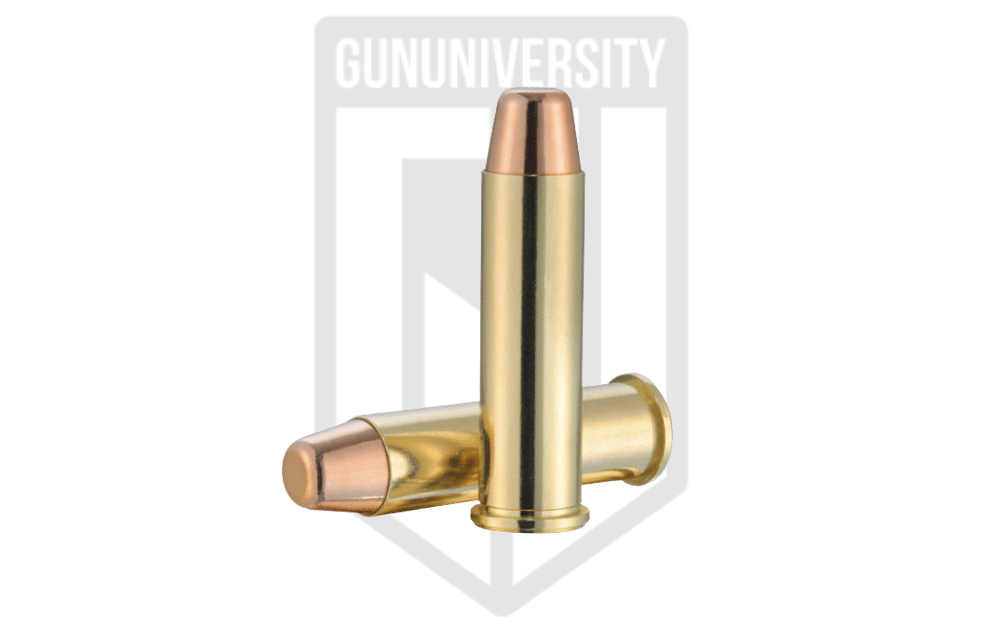


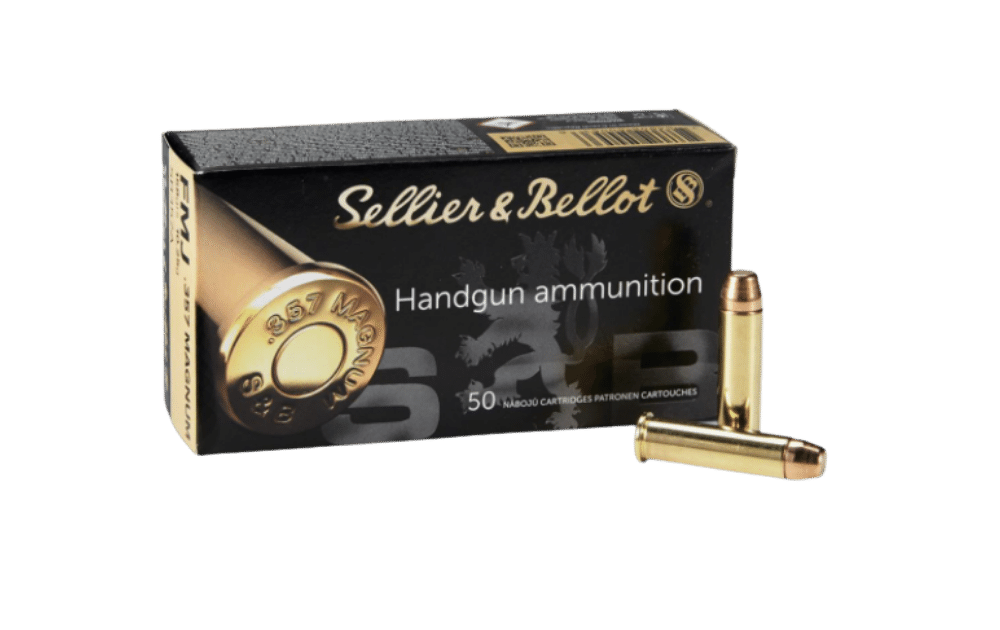
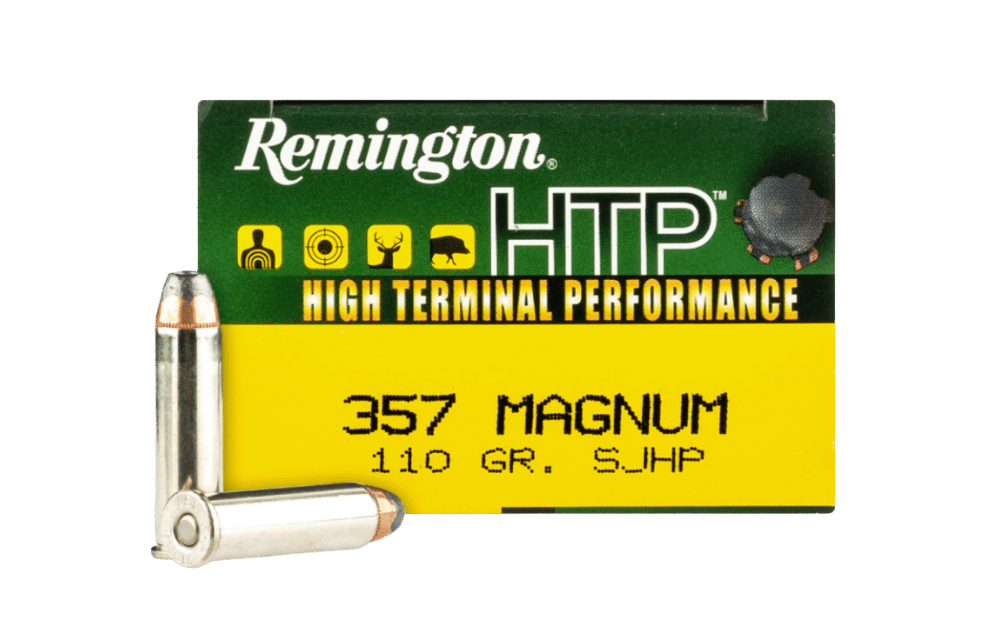



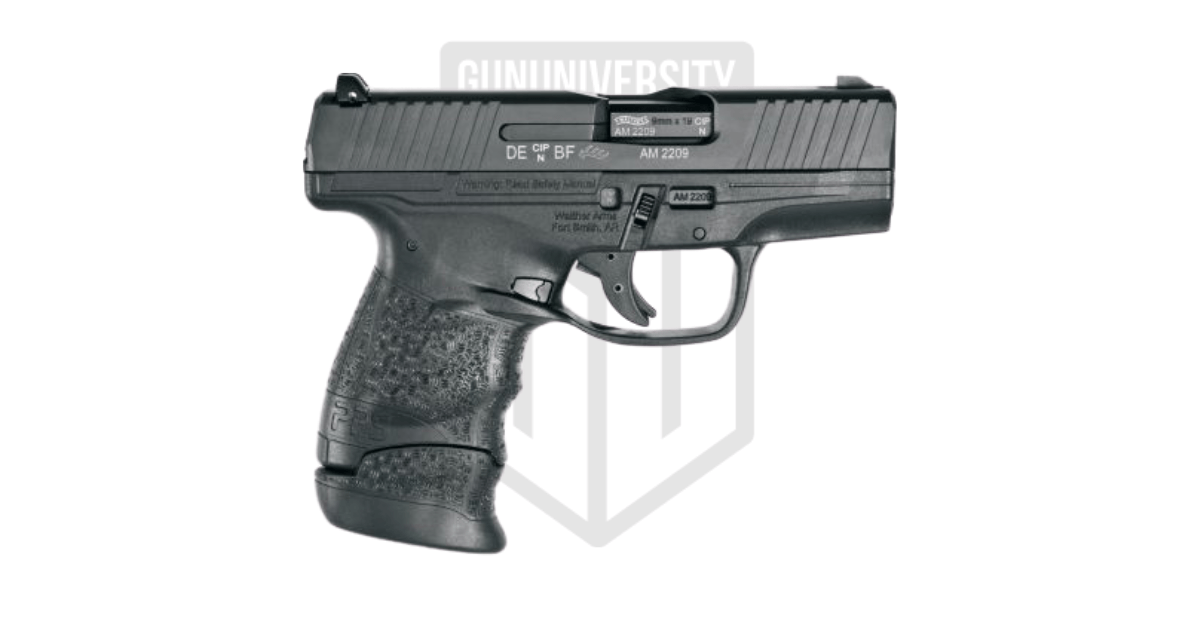
One nice thing I like about my 357 Magnum revolver, is that it doesn’t need lots of attention. I primarily carry it when camping, for black bears, cougars. In the house, it is for 1-shot 1-kill vs anyone who shouldn’t be there. I like that anytime I pick it up and air condition a coke can on the hillside, it just works. That is a far cry from the 45’s I shot as a Navy Corpsman, which half the time on a range would jam when you first picked them up to shoot them.
Not to say that well cleaned and lubed autos would do that. But for just rare shooting, 32 years in, my 357 just plain works.
Need to proof-read article before publishing. “However, even 38 Special loads cost considerably more than 357 Magnums.” That said, there is a lot of food for thought here.
Nice article.
I’ve taken same path you did – I own multiples of both and think both calibers are great. I practice more with 9mm and carry it more. However, I find the revolver more fun to shoot, so I shoot them a lot. My nightstand gun is a 7 round GP 100 loaded with 38+p Gold Dots.
I believe that practice and training is more important than caliber and platform.
Hey,
Love your thinking for the most part, I assume in your comparison of 9mm vs .357 Mag.. In the cost of ammo bit, you state .38Spc will cost more than 357 Mag. . I assume that is a miss print? 38 in bulk is usually far less expensive. Much of the time less than 9mm.
But other than that great logic and great to see it verse so much crap out there!